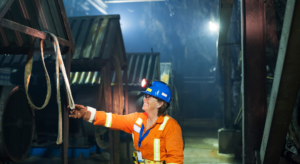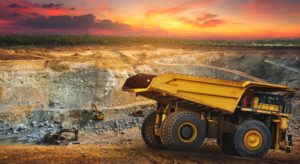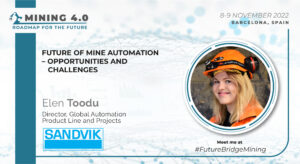The mining industry is rapidly adopting virtual reality (VR) technology. It is revolutionizing safety training for its workforce. So, by creating hyper-realistic simulations of hazardous environments, VR provides miners with immersive, risk-free training opportunities. These are more engaging and effective than traditional methods. As mining companies aim to prevent accidents and enhance emergency preparedness, VR is emerging as a transformative solution for safety education in the digital age. So, let us know more about mine safety with VR in the article.
The Evolution of Safety Training in Mining
Safety has always been paramount for the high-risk mining sector. However, traditional safety training programs have relied on classroom sessions, guides, and manuals to educate workers. While important for building knowledge, these conventional methods lack interactivity and realism when teaching critical skills.
Simulation-based training introduced more engaging drills using dummy props, models, and role-play scenarios. However, they were limited in replicating the actual dangers of complex mining environments. It involves heavy machinery, explosives, confined spaces, toxic gases, and more.
VR overcomes these challenges by placing trainees directly into meticulously constructed hazardous settings and situations. This is in a completely safe yet realistic manner. So, by taking safety education to the next level of immersion, retention, and preparedness, VR is transforming training across the mining industry.
Key Capabilities and Technologies Powering Mine Safety with VR
From open pits to underground shafts, mine safety with VR training platforms allows companies to simulate their unique mine sites and scenarios with high precision. This is by leveraging technologies like:
Advanced 3D Modeling
Detailed virtual environments emerge from actual mine plans, topography data, equipment specs, and more. Moreover, geology, mineral deposits, and infrastructure are all modeled accurately. Furthermore, one can build realistic environments without visiting the site, utilizing drone data, digital twins, etc.
Physics Engines
It incorporates realistic physics, gravity, collisions, explosions, fluid, and material interactions. It helps to emulate authentic behavior. Moreover, advanced physics modeling allows extremely accurate representations.
Graphics Rendering
Photorealistic visuals using techniques like ray tracing, shadows, and high dynamic range imaging ensure immersion. Additionally, visual detail stimulates safety awareness.
Motion Tracking
Body tracking and hand controllers allow natural movement and interaction within the VR environment. As a result, this allows for practicing physical emergency responses.
Haptics
Tactile feedback devices add touch sensations like vibration, pressure, resistance, etc. enhancing realism. So, this adds an important layer of immersion during training.
Connectivity
Multiplayer networking enables collaborative learning and rescue drills. Team coordination skills are also developed.
Mines can customize and validate scenarios matching their unique conditions and procedures. So, by leveraging data from sensors, drones, digital twins, etc. VR training stays current and relevant.
Benefits of Mine Safety with VR Training
Studies have shown mine safety with mine safety with VR training improves learning outcomes by nearly 75% compared to classroom-based methods. Extended reality delivers several impactful benefits. We will cover those in this section to answer what can virtual reality do for safety in mining:
Experiential Learning
Active participation in realistic situations promotes learning through experience and builds muscle memory. As a result, trainees gain practical know-how.
Efficient Training
In a short time, trainers can simultaneously train large groups of employees across diverse procedures. So, it contains dramatically shorter training cycles.
Hazard Recognition
Recognizing risks like ground deformation, gas build-up, equipment hazards, etc. becomes intuitive. So, it develops a “sixth sense” of danger.
Emergency Preparedness
Honing decision-making, communication, and rescue skills prepares individuals for emergencies without exposing them to real danger. This builds up the readiness to respond to crises.
Customizability
Training systems can incorporate site-specific SOPs, machinery, environments, and simulated hazards tailored to the mine’s needs. So, it helps in localized learning.
Accessibility
Trainees can repetitively practice safety drills on-demand to reinforce retention. Moreover, training costs are reduced due to less overhead.
Engagement
Immersive learning drives higher engagement and motivation levels compared to classroom lectures. Moreover, employees embrace training.
With a rigorous focus on safety, mines are leveraging these benefits to upskill workforces through technology giving the solution to the question of what can virtual reality do for safety in mining.
Real-World Applications of Mine Safety with VR Training
Global mining companies like Goldcorp, Teck Resources, and Glencore along with innovative startups have adopted VR across critical training applications:
Hazard Identification
Simulated environments help identify risks like ground instability, electrical faults, gas build-up, etc. before they occur onsite. Moreover, it helps in developing hazard recognition skills.
Fire Response
Fire suppression techniques are practiced in virtual environments replicating mine fires. It helps to learn to fight fires safely.
Confined Space Training
Claustrophobic settings like shafts and tunnels are simulated to train emergency escape and response. As a result, it helps in overcoming claustrophobia.
Equipment Training
Before operating complex machinery such as LHD vehicles and jumbo drills, instructors teach flawless operation. Additionally, operators gain familiarity with heavy equipment.
First Aid
Realistic trauma scenarios prepare workers to administer first aid and save lives. So, confidence in first aid skills is built.
Fall Protection
Mine safety with VR teaches workers about selecting, inspecting, wearing, and working with fall protection gear. Moreover, mitigation of falls is done.
Driver Training
In a safe virtual environment, trainers instruct haul truck operators on collision avoidance, changing road conditions, backward driving, etc. As a result, there is a lot of practice to drive safely.
Mandatory Procedures
Step-by-step standard operating procedures for lockout, tagging, ventilation, PPE usage, etc. are practiced. There are also a lot of committed SOPs to memory.
Additionally, at Goldcorp’s Éléonore mine in Quebec, VR safety training has reduced safety incidents by over 30%. Meanwhile, Spain’s Atalaya Mining has adopted VR to train workers across critical risks and procedures before starting work at a new copper site. As a result, the impact of virtual training on improving mine safety is tangible.
Overcoming Challenges in Adopting VR Safety Training
While the benefits are compelling, some key challenges exist in adopting mine safety with VR training:
Upfront Costs
The initial investment in VR infrastructure and content development requires justification. However, long-term cost savings outweigh initial outlays.
User Adoption
Some resistance from the older workforce unaccustomed to new tech may arise. Demonstrating benefits helps drive adoption. Moreover, change management is key.
Technical Expertise
In-house teams may lack the skills to maintain and update advanced VR platforms, unless outsourced. Additionally, external expertise fills skill gaps.
Simulation Sickness
Nausea and dizziness from VR headsets affect a small percentage of users. Gradual exposure can help overcome it. So, good UI/UX design minimizes these effects.
Complacency
Overconfidence in virtual safety skills not transferring to real-world caution. Reinforced training is required. So, instill a culture of safety first.
However, experts concur the ROI from enhanced safety, productivity, and lowered insurance premiums outweigh the costs of implementation.
Conclusion
As mining companies aim for ambitious safety goals under immense pressure, mine safety with VR training provides a potent solution. This is to instill hazard recognition and emergency preparedness in employees. Moreover, immersive, experiential, and readily accessible learning drives better outcomes while boosting motivation and engagement. While adoption challenges exist, the dramatic benefits are too compelling to ignore. VR training represents the future of safety education in mining. It will also play a key role in protecting the industry’s most important asset – its workforce.
To learn more about the future of mining technology and safety, join the 5th Mining 4.0: North America 2024 summit on April 10-11, 2024 in Toronto, Canada. Bringing together over 100 experts, this premier industry event will explore cutting-edge topics. It will range from automation, digitalization, and electrification to sustainability, operational excellence, and safety training. With powerful insights into the ever-evolving mining landscape, the summit provides tremendous opportunities for mining leaders and technology innovators to connect, learn, and shape the future of the industry. So, learn more about the event now!





